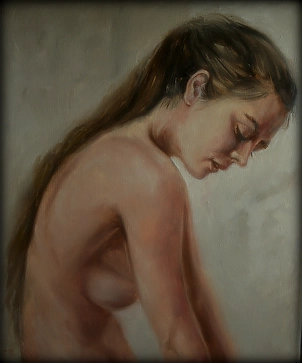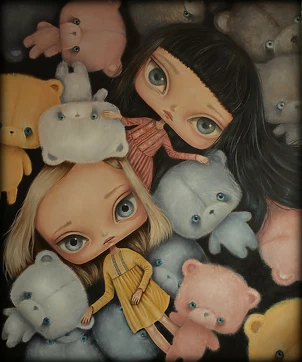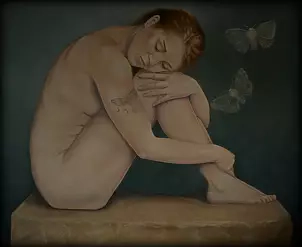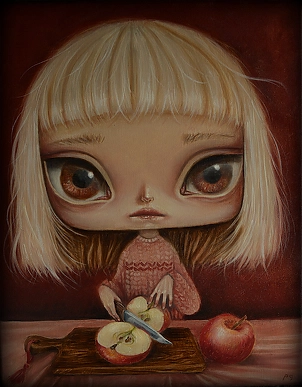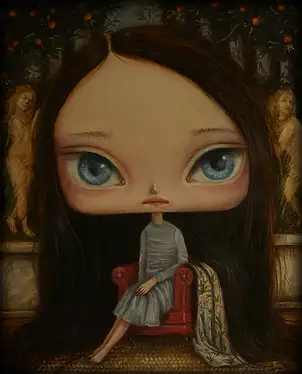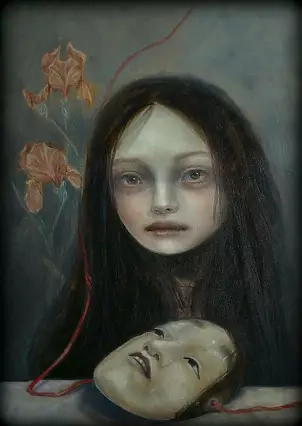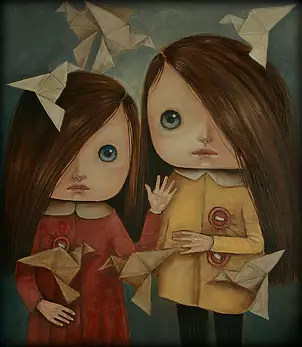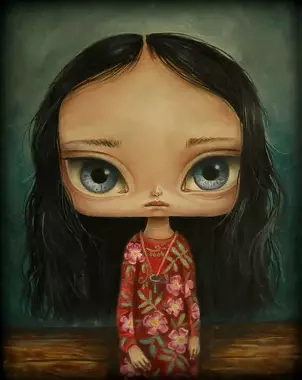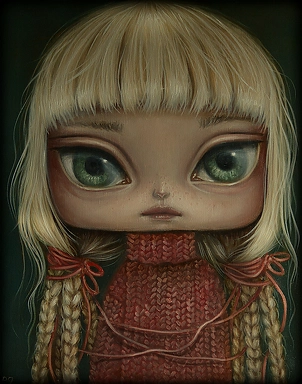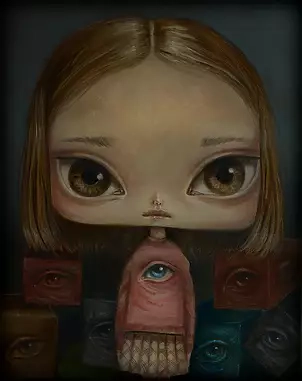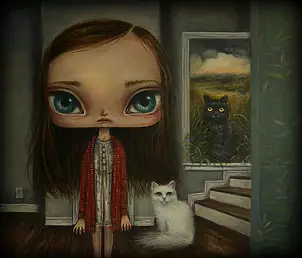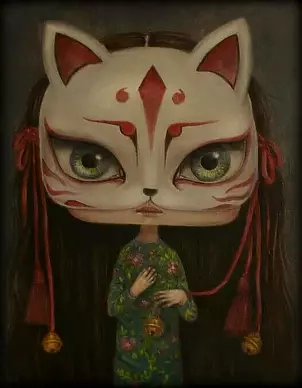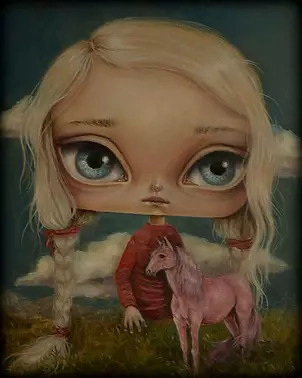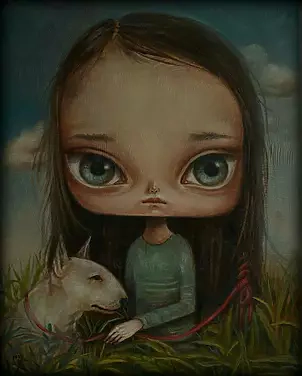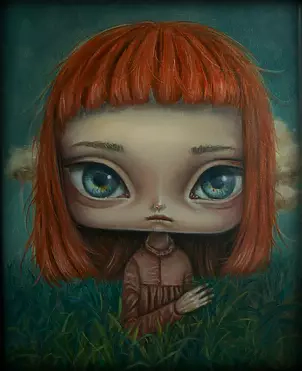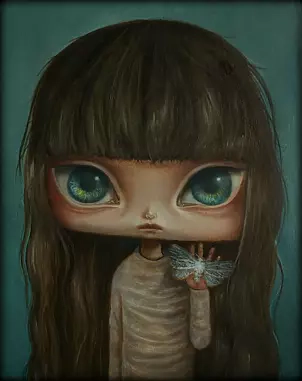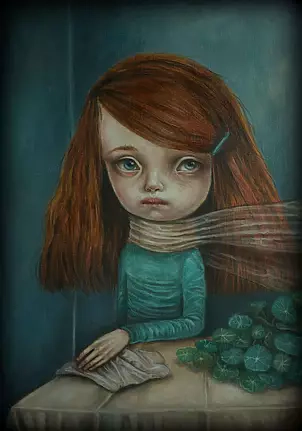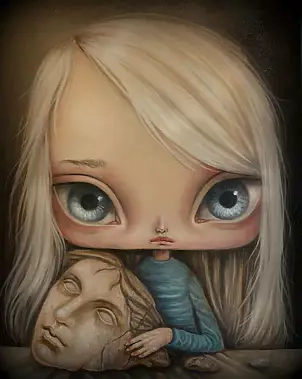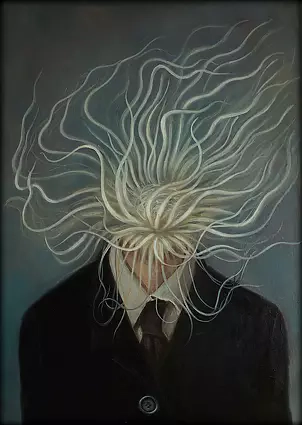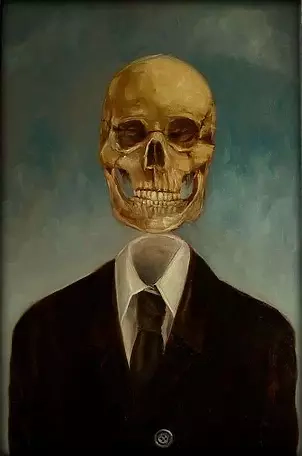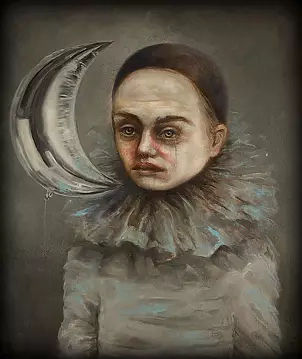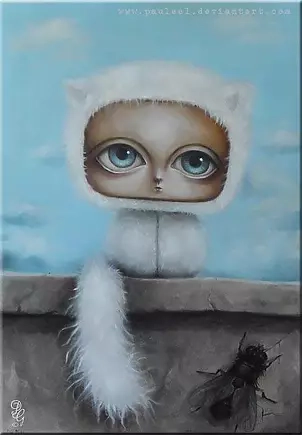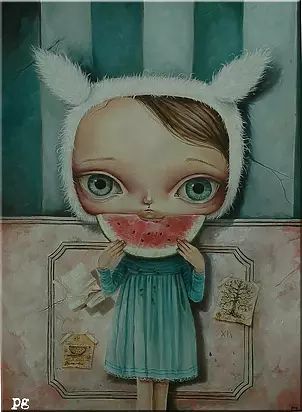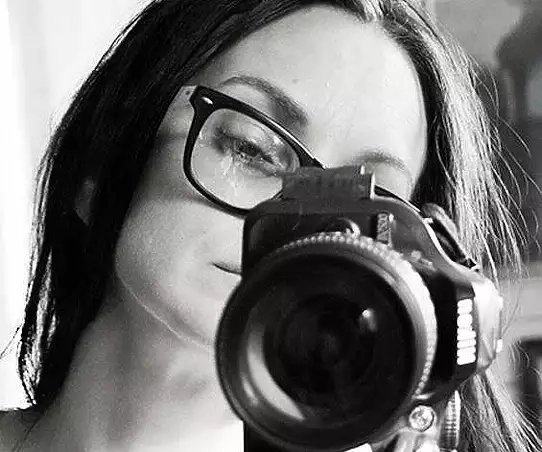
Paulina Góra to polska malarka, której prace skupiają się głównie na symbolice i metaforyce otaczającego nas świata z elementami turpizmu. Przez całe życie miłośniczka mitologii, lubi umieszczać w swoich pracach odniesienia do legend i mitów z różnych kultur. Paulina wykorzystuje swoje umiejętności malarskie jako sposób opowiadania narracji,
koncentrując się na przeniesieniu na płótno własnych doświadczeń i uczuć. Zajmuje się głównie tradycyjnym malarstwem olejnym.
Do ulubionej definicji sztuki artysty należy pogląd, że jest ona wolną interpretacją, przedstawieniem tego, co dla autora jest najpiękniejsze. Pamiętając o tym, że każdy ma swoją definicję piękna może być to niezwykły sposób na nawiązanie niezależnego dialogu pomiędzy odbiorcą a autorem, gdzie każdy spotyka się w różnych miejscach swojej percepcji i dodaje to twórczości głębi przekazu, co więcej sprawia, że sztuka nabiera innego wymiaru, ponieważ jest już odbierana poprzez filtr odczuć odbiorcy.
Twórczość Pauliny Góry sięga w głąb umysłu i samej natury człowieka – zwracając uwagę na podświadomość, marzenia i ukryte wspomnienia z dzieciństwa. Jej obrazy działają jak soczewki na zapomniane wspomnienia, wydobywając wrażliwość, delikatność i czułość, które zwykle gubią się w trudach codziennego życia.
Większość tematów wizualnych jej prac zawiera wizerunki dzieci, obok zabawek, przedstawień flory i fauny czy przedmiotów codziennego użytku, które mają pełnić rolę różnych symboli ważnych dla artystki.
....................................................................................................................................................................
Kim są postaci, które tak często pojawiają się na płótnach Pauliny Góry?
Ci charakterystyczni bohaterowie, „laleczki” o wielkich oczach i kruchych ciałkach, towarzyszą artystce już od kilku lat. To temat, który wciąż eksploatuje, poszukując nowych znaczeń oraz ubierając historie w nowe symbole. A te, na płótnach Pauliny są niezwykle istotne – tworzą opowieść i aurę obrazu. Czasami mroczną i niepokojącą, a innym razem ciepłą, odwołującą się do najmilszych dziecięcych wspomnień. Patrzenie na świat oczami wewnętrznego dziecka jest dla artystki bardzo istotne. Taka perspektywa jest źródłem głębokich wzruszających uniesień, ale w zależności od doświadczeń jednostki może być związana z bólem i trudnymi emocjami.
Bez wątpienia malarstwo Pauliny Góry jest niejednoznaczne, wielowymiarowe, mimo że na
pierwszy rzut oka mogą wydawać się podobne – artystka operuje na kanwie jednej kompozycji. Jednak to akcesoria oraz przestrzeń w której funkcjonują bohaterowie z uniwersum Góry, tworzą aurę obrazu, która w zależności od bagażu emocji i doświadczeń widza, może mieć różne interpretacje.
Paulina Góra MALARSTWO
Paulina Góra is a polish visual artist whose pieces revolve around symbolism of the world around us - with hints of turpism throughout the canvas. A mythology lover since she was a child - it has greatly influenced many of her paintings into having myth references from various cultures. Paulina uses her artistic talents as a way of creating a narration, a story - concentrating on transferring her experiences and emotions onto a canvas. She usually works with traditional oil paint. The artist's favorite definition of art is the point of view that it is a free interpretation, presenting what is the most beautiful or important for the author. Remembering that everyone has their own definition of beauty, it can be an unusual way to establish an independent dialogue between the recipient and the author, where everyone meets in different places of their perception and adds depth of the message, makes art acquire a different dimension, because it's perceived through the feelings filter of the recipient.
Paulina’s pieces reach deep into one’s mind, highlighting their dreams and childhood memories -
hidden in the closed drawers of the mind. The paintings are like lenses, designed to show forgotten, yet cherished memories. From those memories we extract sensitivity, which we tend to lose so often in the harsh realities of life.
The majority of visual themes in her work include images of children alongside toys, representations of flora and fauna, or everyday objects, all of which serve as diverse symbols important to the artist. Don't let appearances deceive you, because beneath the guise of seemingly dolls lies a mature perspective, which may tell us that adulthood or maturity is not just about limitations, conventions, or duties. Maturity is freedom - freedom of perception, reception, interpretation. It's the gift of awareness and the sum of experiences. It's also cooperation with memories and all their baggage, with the inner child that says you can do anything, without adhering to norms, without fears, without the impressions of others, without compromises. And it is precisely this that creates identity - the synergy of childish courage and adult consciousness, from this duality arises the form of the characters depicted in Paulina Góra's paintings. Lovers of Paulina Góra's paintings are captivated by the large, hypnotic, and mysterious eyes of the heroines and heroes. Others pierced by their gaze feel uneasy. This dissonance between admiration and uncertainty is perfectly understandable. Eyes, as a symbol, are present in many cultures and traditions. They can be the "mirror of the soul" but also evoke associations with Orwell's Big Brother, who crosses the threshold of freedom and privacy. Prolonged intense staring - one could say observation - puts the viewer in a state of suspicion and unease. Eyes can be enraptured, in love, or they can be sinister; gazes can hurt, but they can also ask for help.
So who are the characters that so often appear on Paulina Góra's canvases?
These distinctive heroes, "dolls" with large eyes and fragile bodies, have been accompanying the artist for several years now. It's a theme she continues to explore, seeking new meanings and clothing stories in new symbols. And those symbols, on Paulina's canvases, are extremely important - they create the narrative and atmosphere of the painting. Sometimes dark and unsettling, other times warm, evoking the fondest childhood memories. Viewing the world through the eyes of an inner child is very important to the artist. Such a perspective is a source of profound and moving experiences, but depending on the individual's experiences, it can also be associated with pain and difficult emotions.
Undoubtedly, Paulina Góra's paintings are ambiguous, multidimensional, even though at first glance they may seem similar - the artist operates within a single composition. However, it is the accessories and the space in which the heroes from Góra's universe function that create the aura of the painting, which depending on the viewer's emotional baggage and experiences, can have different interpretations.
@2sztuki
To me, the act of painting is...
What was the first painting that you sold?
I’m inspired by...
What's your favorite sentence?
When was the last time you got a nice surprise?
A party is no good without...
I wish I had more...
Do you like nights?
I love it when...
A cat or a dog?
If you could no longer paint, then...
My favorite dish:
Bach, Elvis or Madonna?
If I could live forever, I would like to be...

